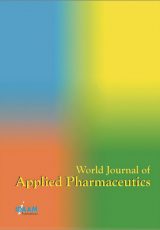Volume 1
January-March 2023
Swarupa Narayan Shirke, Jameel Ahmed S Mulla, Pratiksha Vilas Chavan
Abstract:
Many technologies are evolving to induce this paradigm change from traditional to personalized treatment, with three-dimensional (3D) printing being the most important. Due of its possible benefits over personalizing medications in individually tailored doses, the applications of 3D printing technology in medication conveyance system has exploded in recent years. 3D printing is the technique of building a three-dimensional item layers upon layers with the help of computer software. The ability of 3D printing drugs as an effective technique for achieving customized precision medicines and various 3D printing techniques was highlighted in this review article. Also various challenges are identified that must be overcome in order for this technology to succeed in customized medicine.
Keywords: Three-dimensional Printing, 3D Printing Technology, Computer-aided Designs, Fused Deposition Modeling, Stereolithography
Akshay R Yadav, Vaibhavi A Soundatti
Abstract:
Mascara is a cosmetic that is widely used to enhance eyelashes. It can darken the eyelashes, thicken, lengthen, and/or describe them. The modern mascara formulation usually has different formulations in one of three forms-liquid, powder, or cream; however, most contain the same basic components of pigments, oils, waxes, and preservatives. A liquid in a tube is the most common form of mascara. The present study was carried out using xanthan gum as a natural polymer to formulate herbal mascara. Xanthan gum polymer was used due to the side effects of the available synthesis. By the o/w emulsion method, various batches of herbal mascaras were prepared and evaluated on the parameters viz., skin irritation and patch test.
Keywords: Mascara, Xanthan Gum, Formulation, Evaluation.
Yogita T Rayate, Akshay R Yadav, Shrinivas K Mohite
Abstract:
Most common methods of delivery include the preferred non-invasive peroral (through the mouth), topical (skin), transmucosal (nasal, buccal, sublingual, vaginal, ocular and rectal) and inhalation routes. The conventional dosage forms provide drug release immediately and it causes fluctuation of drug level in blood depending upon dosage form. Therefore to maintain the drug concentration within therapeutically effective range needs novel drug delivery system. In the past few decades, considerable attention has been focused on the development of novel drug delivery system (NDDS). The NDDS should ideally fulfill two prerequisites. Firstly, it should deliver the drug at a rate directed by the needs of the body, over the period of treatment. Secondly, it should channel the active entity to the site of action. In conventional drug delivery systems, there is little or no control over release of the drug and effective concentration at the target site can be achieved by irregular administration of grossly excessive doses. At present, no available drug delivery system behaves ideally, but sincere attempts have been made to achieve them through various novel approaches in drug delivery.
Keywords: Novel Drug Delivery System, Drug Delivery Carriers, Phytosomes, Aquasomes, Sphinosomes, Transferosomes.































